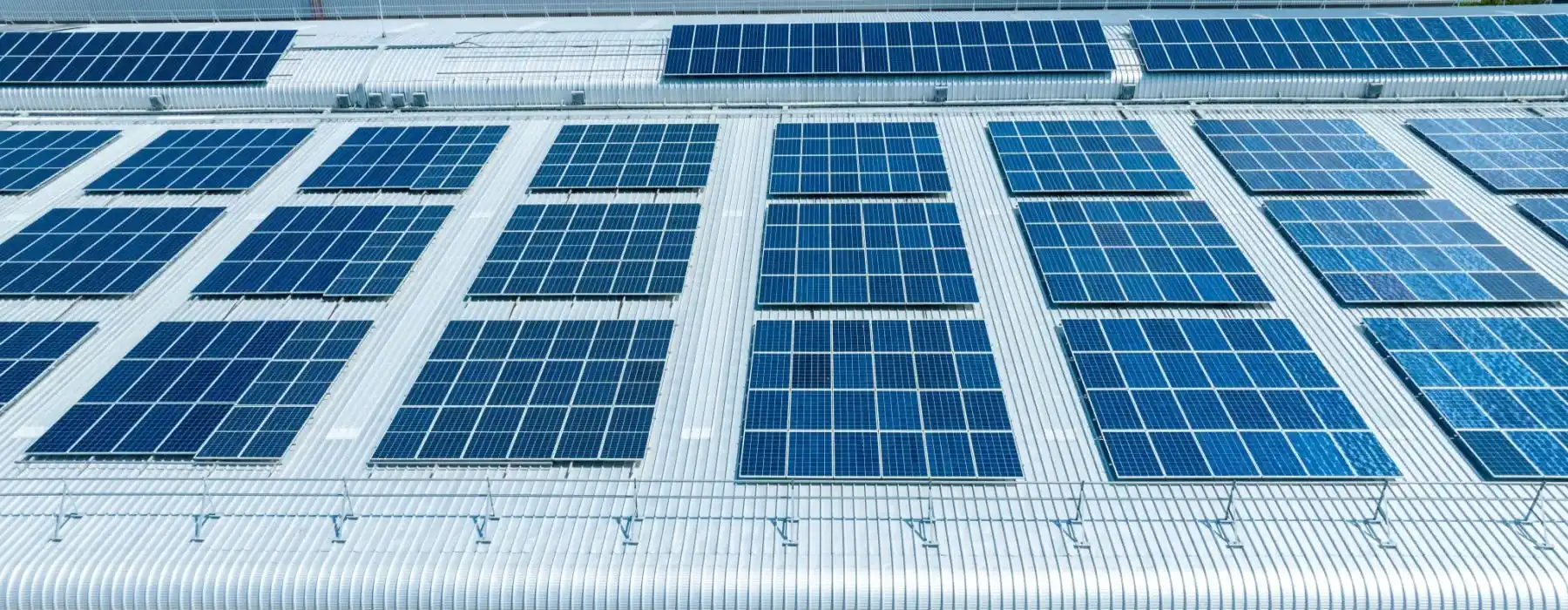3 Building Energy Upgrades to Complement a Commercial Solar Array

Solar power is a proven investment for building owners, especially in places with expensive electricity and financial incentives for renewable energy, such as New York. A commercial solar array can achieve a payback period of less than five years, while having a service life of over two decades. You may even be able to reduce upfront costs to zero, by combining solar rebates with low-interest financing. The share of project costs that is not covered by incentives can be spread over time, and loan payments can be covered with the savings achieved.
Make sure your commercial solar array is professionally designed and qualify for incentives.
Renewable generation can reduce your building’s energy costs and carbon footprint, but using electric power efficiently is equally important. You can achieve a greater ROI by combining solar power with energy efficiency measures, and in many cases you can qualify for additional incentives. Here we will discuss 3 building energy upgrades that achieve synergy with solar panels:
- LED lighting
- Heat pumps for space and water heating
- High efficiency motors with speed control
1) Upgrading to LED Lighting

LEDs and solar cells are similar in many ways: both devices are manufactured from semiconductor materials, they can reduce your power bills, and they offer a short payback period. LEDs convert electricity into light with high efficiency, and solar panels perform the opposite function, converting sunlight into electricity.
An LED lighting upgrade can achieve a payback period of less than three years, or even less than one year in buildings that operate 24/7. Depending on the type of lighting being replaced, LEDs can achieve electricity savings in the range of 25% to 90%. High-quality LED fixtures can last for more than a decade, and their typical warranty period is five years or more.
There are three main ways to upgrade a building’s lighting system to LED:
- Lamp replacement, using the existing fixtures and wiring.
- LED retrofit kits, which modify the internal wiring of existing fixtures while conserving their housing.
- Complete light fixture replacements.
Direct lamp replacements and retrofit kits are recommended when you need to upgrade a lighting system to LED with minimal disruption, since you can keep the existing fixtures. This also means that relamps and retrofits are quick and affordable. Complete fixture replacements involve a higher investment, but you can also achieve a slightly higher efficiency. A complete fixture replacement can be cost-effective if you’re planning a major renovation where you intend to upgrade the lighting system completely.
2) Heat Pumps and Solar Panels Achieve Synergy

A heat pump can be described in simple words as an air conditioner operating in reverse. Both devices rely on a refrigerant compression and expansion cycle, but a heat pump switches the heat flow direction to achieve a warming effect. Some heat pumps are reversible, which means they can operate as air conditioners during summer, and you can combine two HVAC systems into a single piece of equipment.
Since a heat pump runs fully with electricity, it can use the output of a commercial solar array all year long. On the other hand, buildings that use conventional air conditioning in summer and combustion heating in winter can only offset their cooling costs with solar energy.
NYC building owners gain an additional benefit from combining heat pumps with commercial solar power - lowering their CO2 emission penalties under Local Law 97 of 2019. Natural gas has a carbon footprint of 0.00005311 tCO2-eq/kBTU under LL97, while grid electricity has a carbon footprint of 0.000288962 tCO-eq/kWh, and building owners are penalized with $268 for every metric ton of CO2-equivalent over their respective limit. However, solar electricity has zero carbon footprint, and the same applies for heat pump systems using it.
3) High-Efficiency Motors with Speed Control

Commercial buildings use plenty of motor-driven equipment. These include air handlers, chillers, cooling towers and pumping systems. The energy consumption of these systems can be greatly reduced by replacing their motors with newer high-efficiency units and adding speed control with variable frequency drives (VFD). A VFD can reduce the input voltage and frequency to reduce motor RPM, which is very useful when they operate at part load.
- To make sure you’re purchasing high-efficiency motors, the best solution is looking for units with NEMA Premium Efficiency.
- If you’re replacing smaller electric motors (below 1 horsepower), you can look for electronically commutated motors (ECM), which have built-in speed control.
As a rule of thumb, a variable discharge fan reduces its power consumption by a cubic factor when motor speed is reduced. For example, if speed is reduced to 80% of rated RPM, power consumption is reduced to 51% (80% x 80% x 80%).
You can achieve even greater savings with high-efficiency motors if you also own a commercial solar array. The consumption of motor-driven devices is reduced directly, and you can then offset their remaining consumption with solar generation (partially or fully). Running electric motors directly with solar panels is not feasible, since their electricity output is variable. However, a grid-tied solar array can cover their consumption while the grid provides voltage stability.

Michael Tobias
Michael Tobias, the Founding Principal of NY Engineers, currently leads a team of 50+ MEP/FP engineers and has led over 1,000 projects in the US
Join 15,000+ Fellow Architects and Contractors
Get expert engineering tips straight to your inbox. Subscribe to the NY Engineers Blog below.



